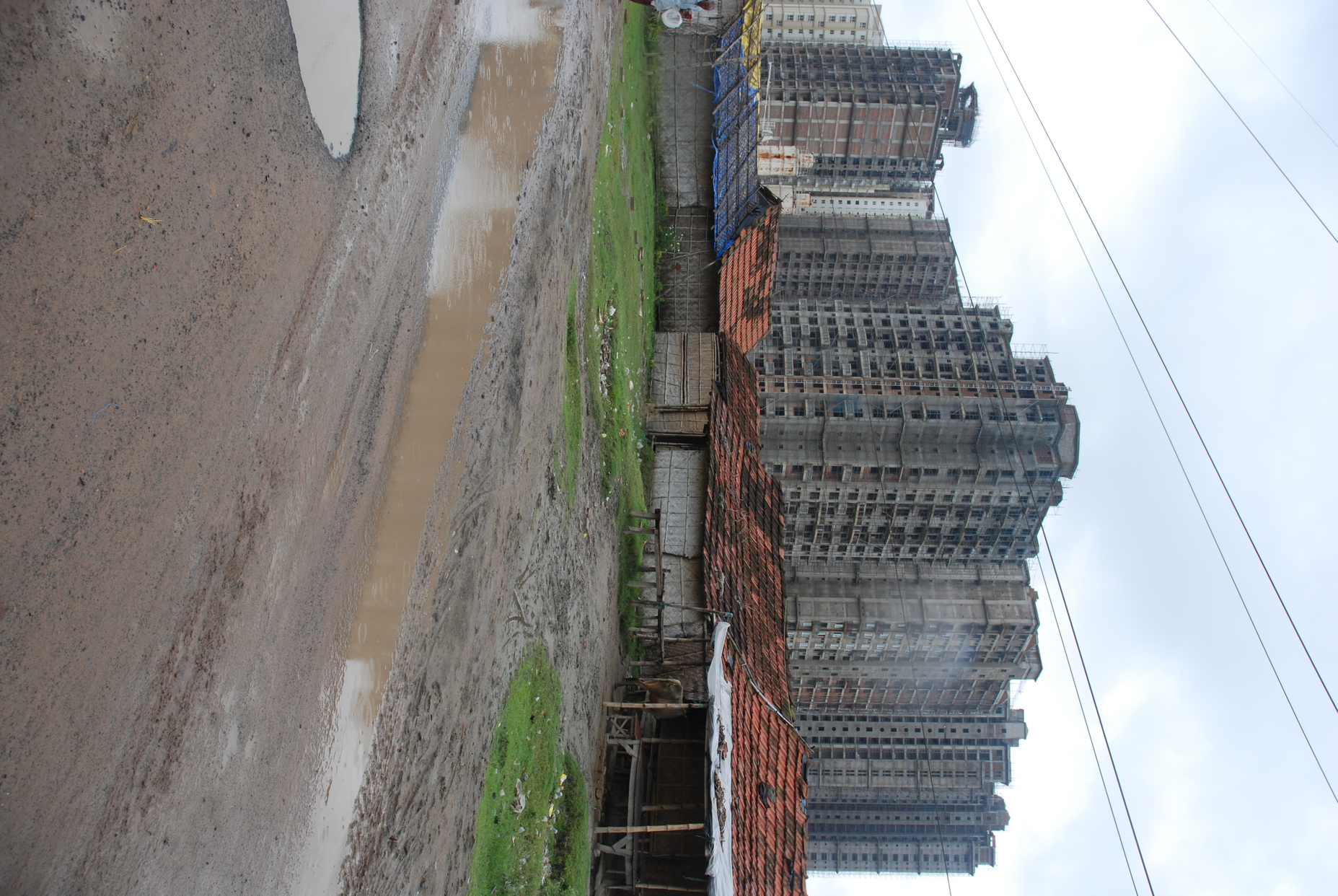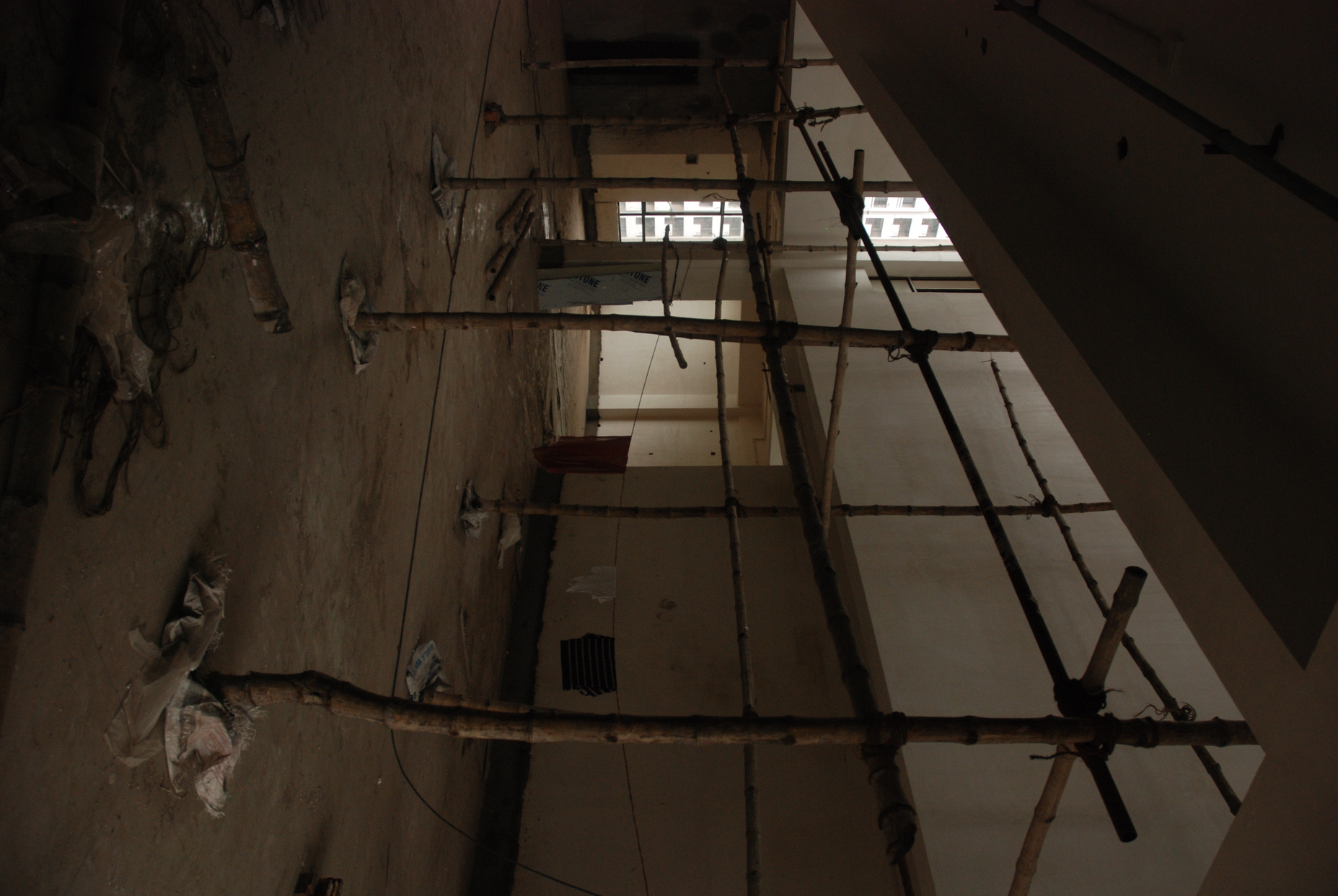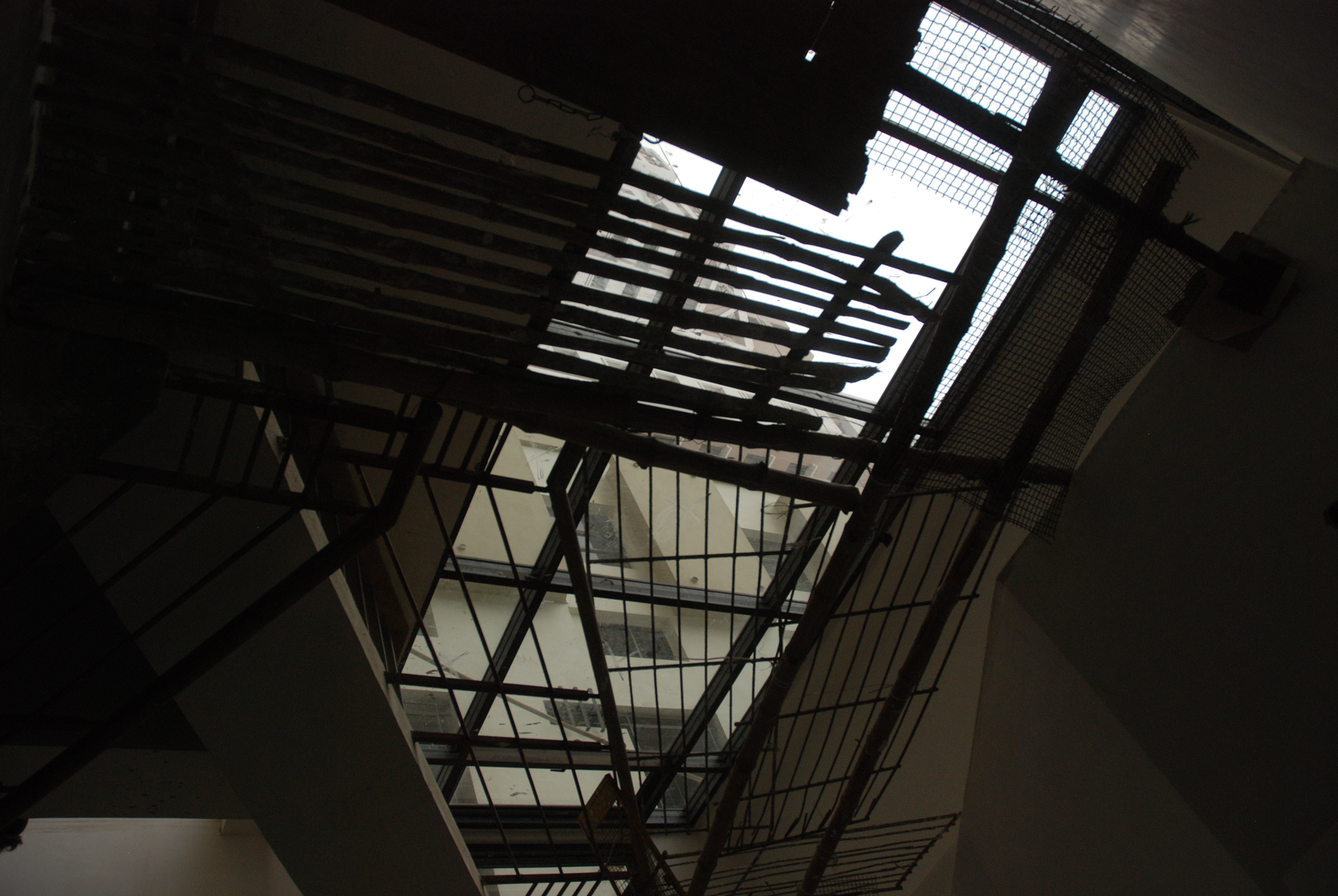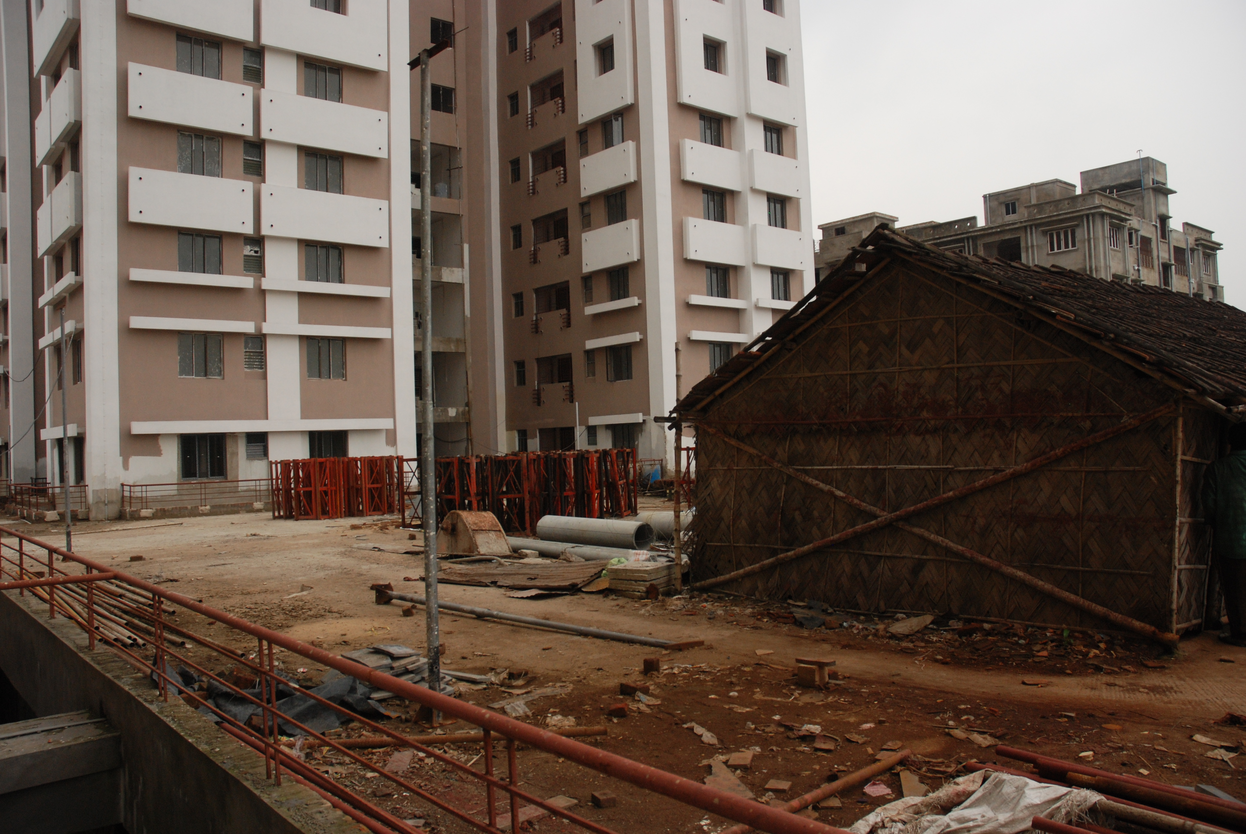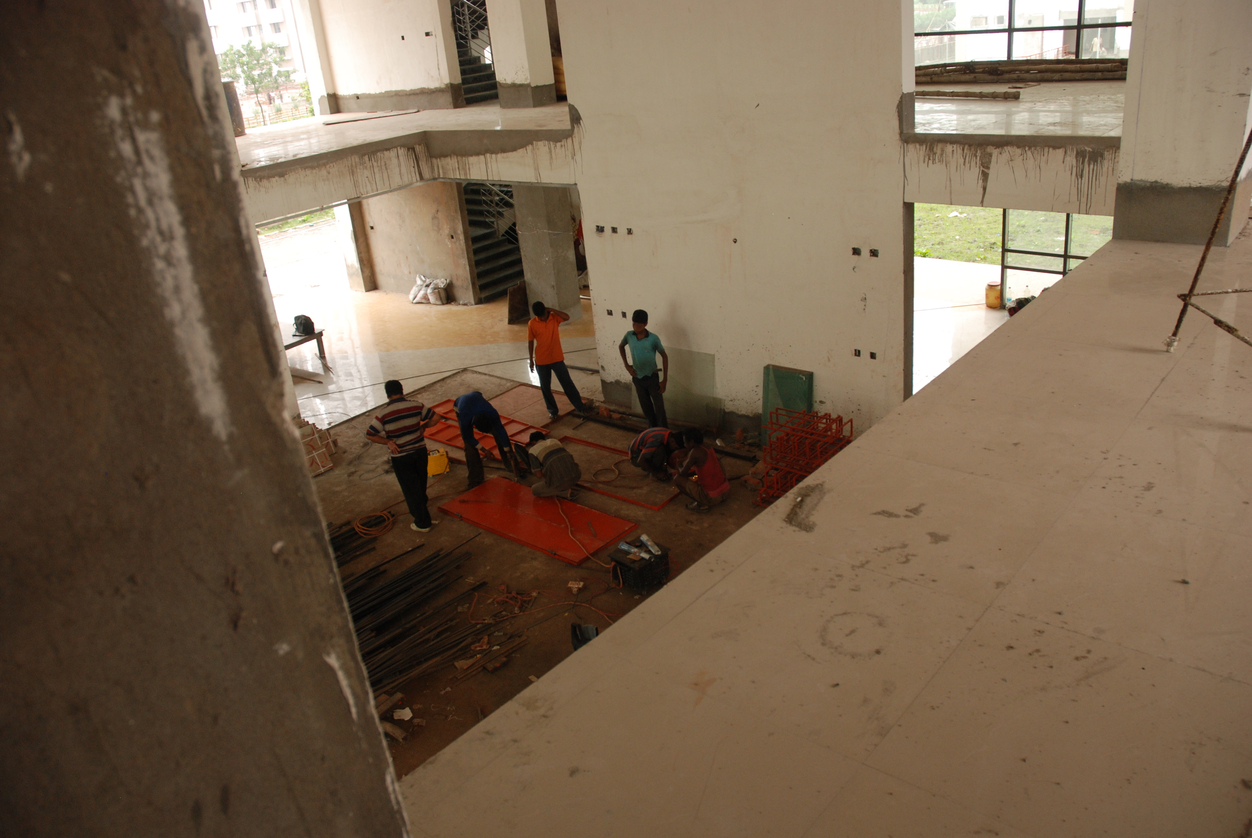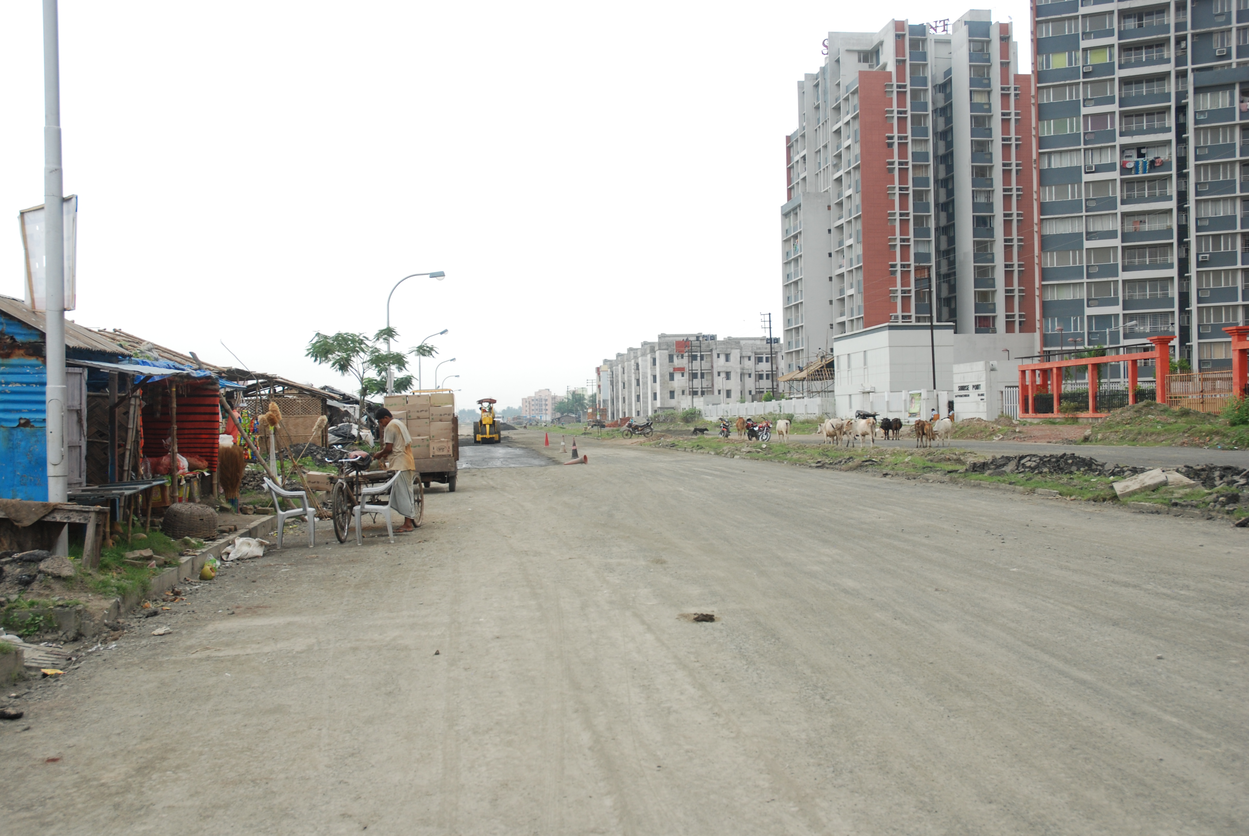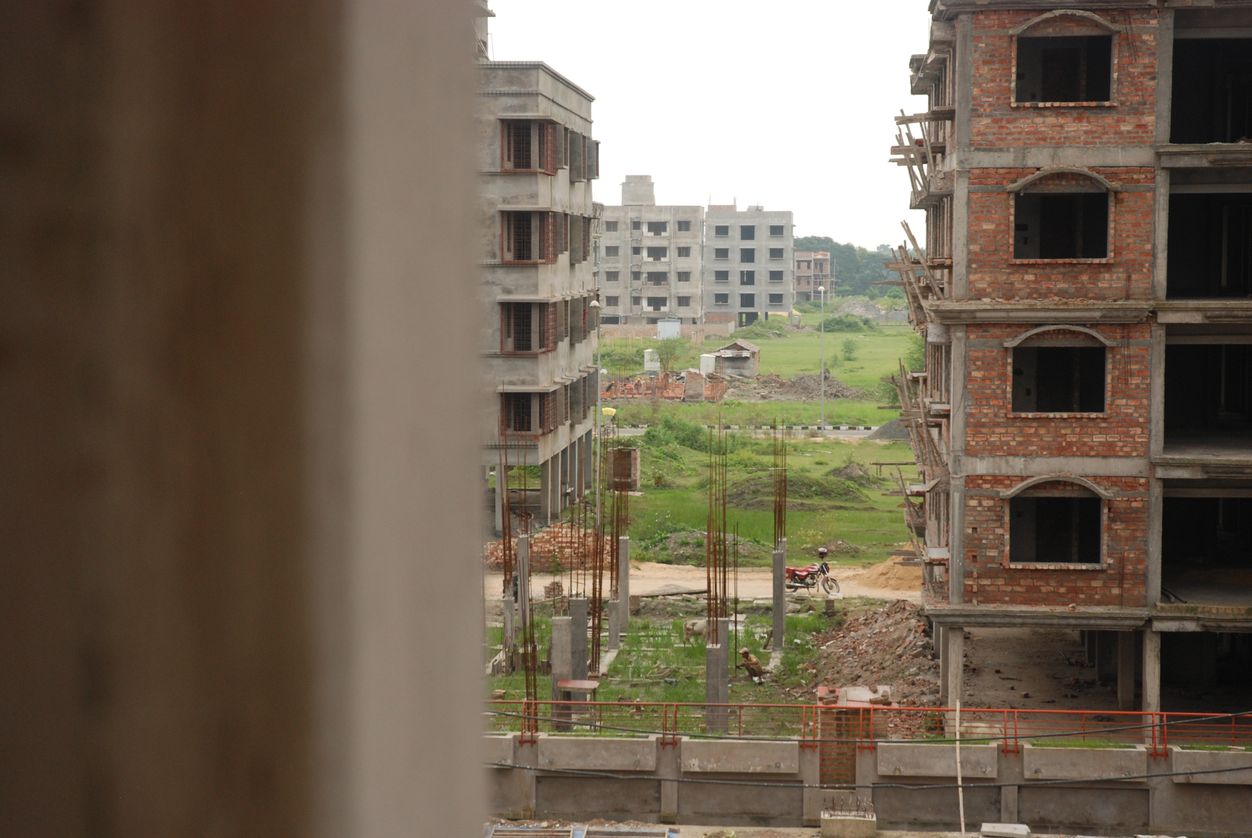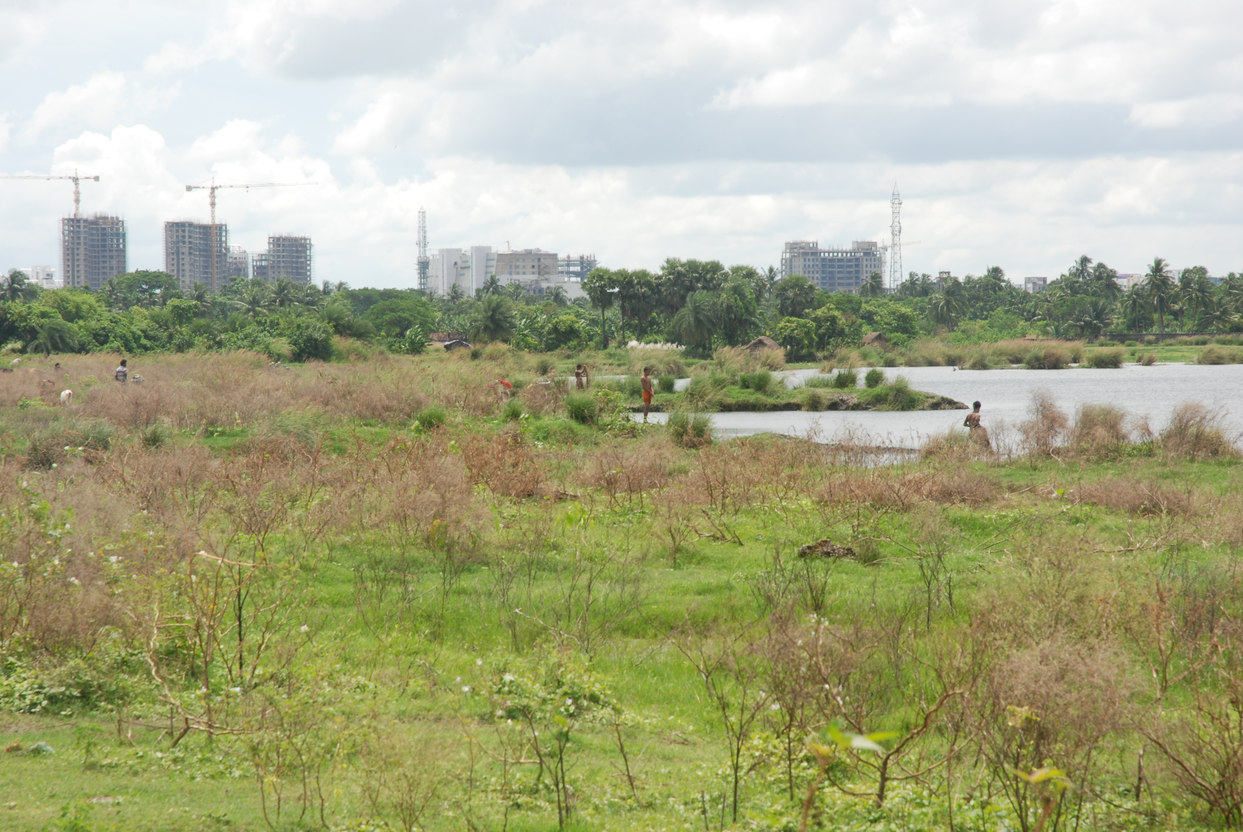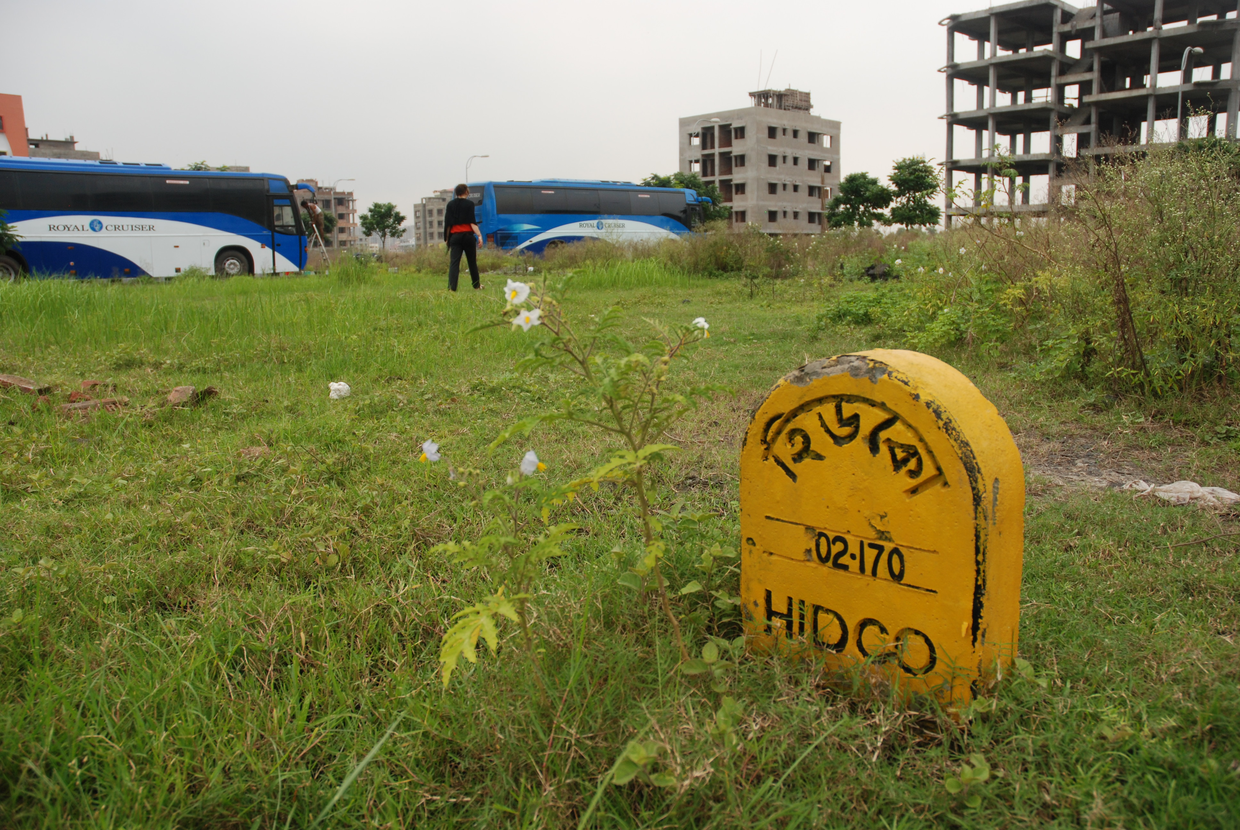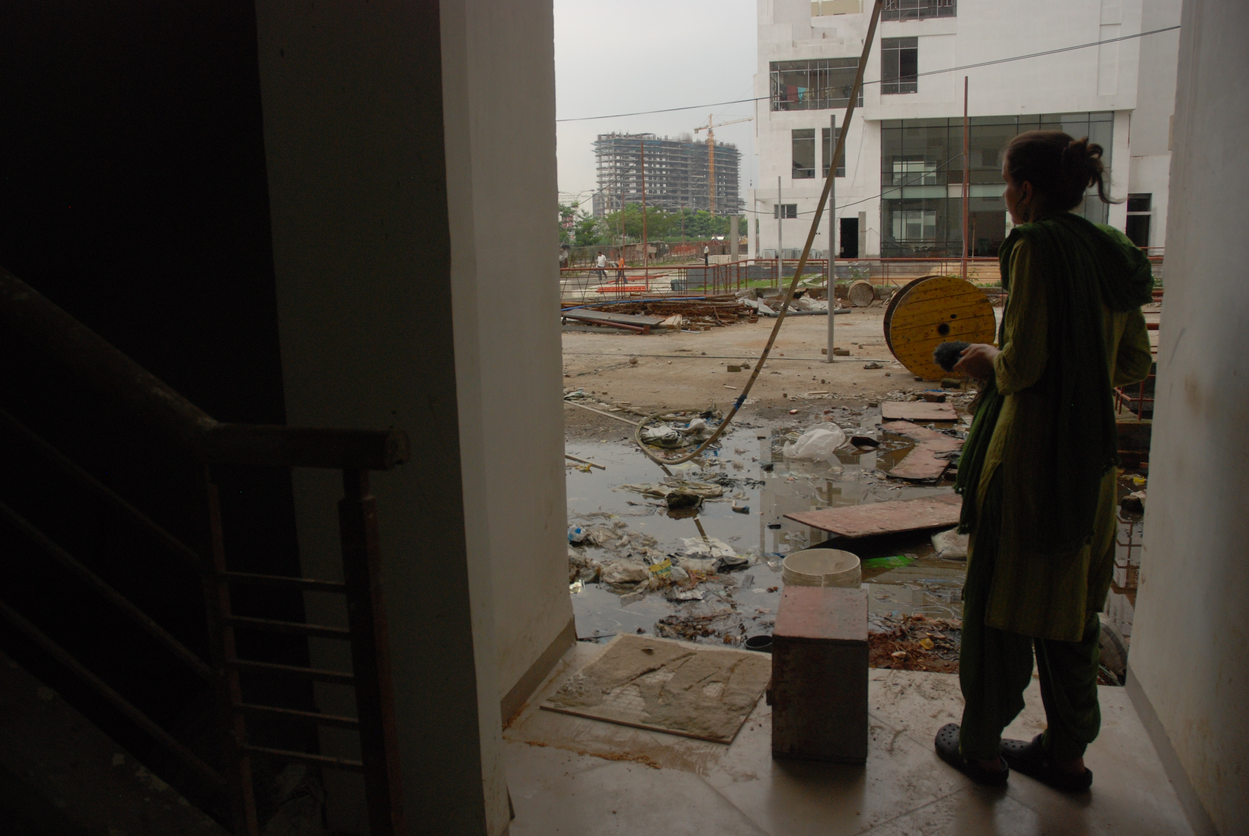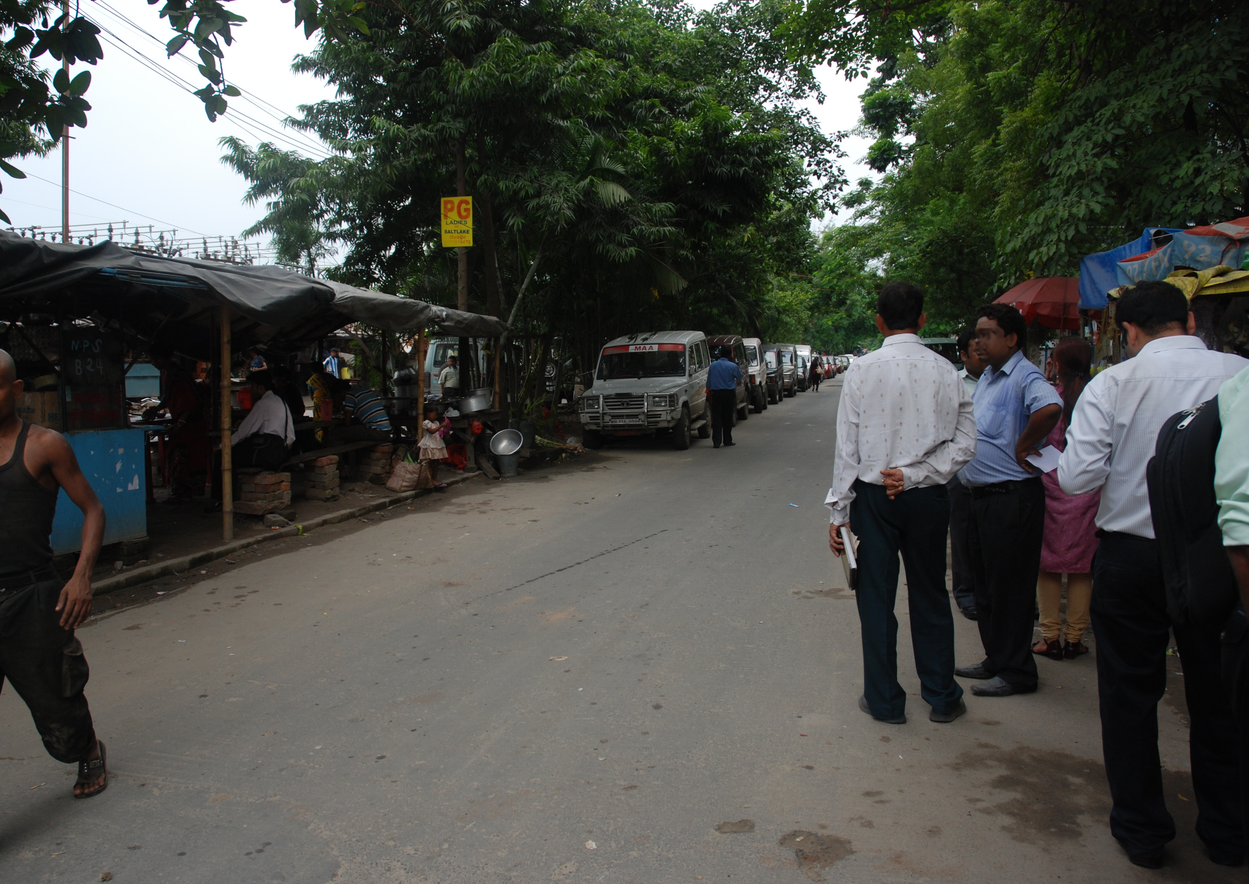Introduction
The sounds of a place can reveal what it is made up of: the infrastructures, lines of power and governance, bodies, and ideologies of a place, and how they move in relation to one another, all make audible conditions of social, political, economic and cultural production. By listening to these relations, it is possible to get a sense of the multiple terrains that comprise such places and the atmospheres they engender (Thibaud 2011); sounds can help in understanding how place is made, unmade and remade. Through careful listening it is possible to encounter sounding as a way of “knowing,” as an acoustemology or acoustic epistemology, an idea developed by Steve Feld during his work in Papua New Guinea. For Feld, acoustemology is the “potential of acoustic knowing, of sounding as a condition of and for knowing, of sonic presence and awareness as potent shaping forces in how people make sense of experiences” (1996: 97). Put simply, acoustemology asks: what kinds of meanings, knowledges, values, communications, identities are afforded through sonic practices and forms of representation (Rice 2003)?
In this paper I will focus on the site of Rajarhat New Town, a newly developing satellite town in West Bengal, constructed upon histories of land grabs and mass dispossession, in order to demonstrate how soundings, and acoustemology, can hold relevance for a relational materialist politics. By this I mean a politics that is explicitly committed to engaging with the differential and unequal access to resources (such as work, housing, mobility, education, healthcare) and social relations that tend to be experienced and reproduced through processes of contemporary capital. Politics, as I am using it, is less orientated toward rigid systems that see capital as a ‘thing’ in the world, than toward the complex ways that such processes and conditions assemble and decompose; it is an understanding of capital as a way of relating and being affected. Soundings are useful to this orientation precisely for their ability to move along with such complexity, bringing together possibilities for affective and semiotic approaches. It is this specific combination – a capacity for attending to those highly contingent and contagious atmospheres of a place, and to infrastructural, discursive, and material systems – that make soundings interesting for geo-politics.
Listening to displacement and dispossession
“Where is Rajarhat? If you enter the city from the airport side, after few kilometres, near Koikhali, you take the left turn, and then you will traverse the newly laid road that cuts through miles and miles of waste land, here and there marked with a shiny mall or few glass buildings, high rises built by new developers, and sign boards announcing the coming up of an office, or an e-firm, or a conference centre – all that Kolkata apparently did not have. This is a notified area, named after the deceased venerable leader of Bengal – the Jyoti Basu Nagar. After you have covered about fifteen miles in this way, you will bypass Salt Lake and reach the artery that will re-connect you with Kolkata. Possibly you will be relieved for you have not seen in the thirty minutes or so you were going in a car or the speeding bus ferrying you from the airport to the city any pond, any water body, any village, any school, any farmer, any farming land, any herd of cattle. All these are gone. Land has been taken over to meet the deficit of Kolkata. But from the city side that is from the west, Rajarhat is beyond Kolkata, with few buses to connect, only one road to lead to, and as a person of Kolkata you have no reason to go beyond unless you are a BPO employee, or an employee in a mall, or a construction worker (in that case you of course stay there), or have relatives who have bought houses there (possibly flouting the law because if you have already a house in the city you cannot possess a house in the notified area). When the night falls, then of course there is nothing for you. Only syndicates dealing with money, land, building material, waste disposal business, and firearms, are the denizens of the new city at night, the city beyond Kolkata” (Samaddar nd).
My research in Rajarhat New Town took place within the framework of Transit Labour, a project exploring changes in forms of work in China, India and Australia during what has been termed the “Asian Century” (http://www.transitlabour.asia/). Our focus was on the logistics and information industries and how they intersect with, and are reliant upon, infrastructures and economies, land, and resource use. In 2011-2012 Transit Labour worked onsite in collaboration with Kolkata-based researchers from the Calcutta Research Group –a collective of scholar-activists exploring issues of autonomy, human rights, women’s struggles, forced displacement and migration, conflicts and borders – who had been investigating the history and development of Rajarhat New Town.
The township, lying in the North 24 Parganas district of the state of West Bengal (on the north-east border of Kolkata), is an urban development initially proposed by the West Bengali government to stimulate the real estate sector (Sengupta 2007). HIDCO, the West Bengal Housing Infrastructure Development Corporation, was set up in the late 1990s to lead the development process that would see the land turned into an economically viable IT park – New Town has been slated to become Kolkata’s second major IT hub and is now designated a “smart green city.” HIDCO was given authority to buy and sell land, erect housing and commercial premises, and generally maintain the city to come. Construction proceeded steadily with the building of industrial facilities, including offices, entertainment complexes, leisure, shopping and cultural centers, educational institutions (schools and universities) and flats (Hill and Athique 2013). However, following the 2008 global economic crash, investment capital was withdrawn, and development of Rajarhat New Town stalled for some time (Neilson and Rossiter 2011).
Prior to development, the lands on which Rajarhat New Town was planned were known as some of the most biodiverse and fertile in the West Bengal region. They were predominantly used for peasant farming, producing up to four crops per year. This was in part due to the life-giving canal lines, with irrigation coming from several waterways, including the Keshtopur and Bagjola. Grain crops were produced alongside vegetables and fruits. During the monsoon season, the region was supplied with fish from the fishing embankments, and dairy herds were also maintained.
The British colonial Land Acquisition Act (1894) was deployed by the government in the late 1990s to acquire thousands of hectares of land from occupying farmers. Initially famers rejected the offers and were subsequently subjected to government intimidation, including coercion at gunpoint. This resulted in the instantiation of the Rajarhaat Krishi Roksha Committee (Save Rajarhat Farmers Committee). The government continued its campaign against the famers, offering differential and unfamiliar new labor conditions and inadequate compensation packages. When this failed to convince landowners, they set up terror squads through which they violently suppressed farmer opposition. By the time the economic crisis hit, much of the land was wasteland under development. The brutal regimes of postcolonial capitalism and accumulation have been ongoing (Samaddar 2015).
It was a decade after this process began that sound artist Sophea Lerner, architect/ geographer Kate Hepworth, and I undertook several days of fieldwork in Rajarhat New Town. We were primarily investigating the various labor regimes that coexist within or contribute to the production of the area. Following researchers from the Calcutta Group, we witnessed how the formation of new towns purposed for IT industries was entirely predicated on modes of “‘primitive accumulation’ in the form of peasant labor dispossessed of agricultural economies” (Dey, Samaddar and Sen 2013 cited in Kanngieser, Neilson and Rossiter 2014: 3). This was evident in the acutely overlapping geographies of high tech construction and agricultural environments (Dey and Grappi 2015). These were both visible (concrete building sites overtaking fields) and invisible (rhythms of work relative to time, the intersectional usages of space). The sonic atmospheres of the sites we visited articulated these environments in myriad ways.
Sound fields and atmospheres
The soundings of the places we visited in Rajarhat New Town: a market, canal embankments, a mall, abandoned car parks, an office block, resonated with the dissonances of the sites’ histories. R. Murray Schafer, in his writing on acoustic ecologies, states that “the general acoustic environment of a society can be read as an indicator of the social conditions, which produce it” (1994: 4). For Schafer, acoustic landscapes reveal the polyphonic events and relationships that occur in time and space, which often go unseen or unnoticed. The discordant rhythms and tempos of Rajarhat New Town accentuated this. In the satellite city, the tensions accompanying the primitive accumulation into urban commerce and the daily rhythms of its progressions were heard as much in the tenors of voiced instructions and conversations, the amplitude and speed of construction, as in the halting and evacuation of sound.
The juxtaposition of sound and “silence” was common across several different locations and highlighted the variances in the times and spaces of displacement and dispossession. We began at three building sites. The effect of our progression from the taxi to the threshold of the property was audible in the sudden stopping of labor; our foreignness, as three white women carrying recording equipment, added to the bursts of chatter and laughter. Wheelbarrows were dropped, and voices were pitched towards us. After some conversation, we were allowed to enter.The sites encompassed both commercial developments for IT and related service firms, such as Wipro, Tata Consultancy Services, Accenture and Infosy, and multistory car parks. They were staggered in their stages of construction. While from the outside they appeared frenetic and were surrounded by heavily populated roads and shops, in the interior they contained vast stillnesses.
In the first building there were deep echoes of construction, with the whirring of machines buried in the structure resonating off empty concrete rooms. The building remained mostly unfinished – clothes strung over makeshift lines and stacks of building materials were the only visible signs of human presence. We could not discover the source of the machine noise; it remained unseen in its droning persistence. Walking out of the building, we heard a splashing and crunching to the right, the site of a small hut surrounded by shingles, a holdout from land struggles, defiant or recently defeated, between the concrete husks. The drone intensified. Not far behind the building was a wetland, with people bent over in the reeds. Children ran between the buildings, pushing wheelbarrows of debris over stone and dirt mounds.
We made our way into the second building, which appeared even less populated than the first. Our negotiations with the building manager were audibly difficult, although the building seemed uninhabited, with long tracts of concrete lying inert, with only far-off clanging to be heard as we walked up and down a stairwell trying to discern the sound source. Between levels, the stillness was intersected by concentrated nodes of activity, and eventually we encountered a room full of workers arc welding.
The hard ricocheting sounds and sparks of the welder against concrete were lost in the vastness of the space, a tiny hub of movement in what otherwise gave the sense of an abandoned megastructure.
Across the road, in the car park, the same immediate stillness of the gated area contrasted with the sociability of the roadside a few meters beyond the gate. We convinced the guard to let us look around. In front of us stood a massive multistory structure.
Walking inside, drips from a broken pipe highlighted the huge expanses of inactivity, the space filled with puddles of water but very few cars. A security guard wandered around one of the lower levels, singing and whistling. Somewhere a radio played pop songs, the only sound apart from the water and distant road noise. In the stairwell very little could be heard. In all of the building sites acousmatic sounds functioned to emphasize the disparities of activity across territories of construction.
In the buildings and car park, sound functioned as a barometer or indicator of the ways in which space was inhabited through processes of labor; to recall Barry Blesser and Linda Ruth Salter (2007), sounds enabled the sensing of depth and size through the resonances of rooms, the locations of steel and concrete frames and the emptiness of buildings that looked inhabited, or the inhabitants of buildings that looked empty. The particular constellations of people and objects in these spaces and the ways that spaces were being used were far more audible, sometimes in more nuanced ways, than they were visible, through the resonances of material events and bodies.
The activity and stillness of Rajarhat New Town coincided with the ways in which the sights and sounds of displacement were both hidden and overt; alongside the metal skeletons of business industrial centers and apartment buildings were farmers tending to small plots of land and moving rubble.
What was audible across the different sites was the interplay between tight consolidations of rural and urban sounds – which, rather than being exceptional in their interruptive patterns, seemed integral to the patterns of labor and reproduction. Moving between the car park and building sites, we encountered wetlands, which provided some insight into how the land was inhabited and worked before the acquisitions, with fisherman scattered along a fishing embankment.
The pastureland bordered by the embankment was covered with cows grazing and marsh birds. The cows were used to humans; they crowded around the taxi and prevented us from getting out. They nuzzled and chewed on the microphones. A microphone broke and emitted little more than a high-pitched buzzing. The land was quiet except for fishermen and farmers talking and singing. A song rose up over the canal, where men were heaving mud from the shore up to the levee. The sounds of bodies engaging water and mud broke the non-human ambiance of wind, birds calling and cows lowing, jangling bells and chasing off flies. Despite being only a few miles away from the concrete buildings, little construction noise was heard. Occasionally a plane flew overhead, garnering response from the farmers. They didn’t comment on our presence.
The overlays of sounds in Rajarhat’s urbanization and the presence of agricultural activity within this urbanization revealed how messy and non-linear such forces of governance can be. Where and how sounds were heard told us about how geographies were categorized and allocated, by whom they were populated, and in what capacities. A few miles down the road from the embankment we came to a plot of land on which rows of buses stood next to a garage. We talked to some builders and bus drivers about the sites. They told us about the remains of construction – yellow HIDCO markers served to demarcate the perimeters of a building that was never finished beyond a partial steel frame in the sightline of a block of flats that lay predominantly empty.
The builders told us the land was never occupied by farmers, that it was empty before HIDCO took it over, even though it was clear that the land was marshy, and they admitted that it was a former body of water. They told us that Rajarhat New Town would be the next London. Like the embankment we had come from, the land with the markers seemed much further away from the activity of the construction than its geography would have suggested, although the marks of dispossession were everywhere.
What the differences in soundings across the buildings, car parks and marshlands made clear was how fundamentally implicated politics, history and bodies were to the sensing or feeling of the environment, atmospheres and ambiances we came into and were part of. Jean-Paul Thibaud (2011) writes that an ambiance is a “space-time qualified from a sensory point of view.” Sound is crucial to ambiances: it surrounds bodies in all directions, which has to do with the resonant frequencies of sounds, which means the vibratory quality of sound (making) is something that is felt through bodies on registers that go beyond that of the audible. In his work on sound and urbanity, Thibaud speaks of resonance as critical to sensing environment. He writes, “with the idea of resonance, the world of sound makes explicit the very power of ambiance. It helps to describe the very process by which I feel and sense the world” (ibid).
What the sound fields of the buildings, the car parks, the farmlands, the embankment affectively contributed to were the ambiances of the sites – how they could be sensed and felt – which informed how knowledge of the spaces and their social political processes could be produced.
In these spaces, stillness and noise are concatenated, soundings which reveal social and political processes. Driving down the road we found clusters of food stalls huddled outside of a bare shopping mall. The stalls were busy with people gathered in groups or alone: eating and reading, listening to music, fixing motorbikes and bicycles. The stalls were cramped with bodies, again an acute contrast to the empty megastructures that surrounded them. The stalls were noisy with cooking, pans being scraped and washed, food sizzling and being tossed. Dense choreographies of space were enacted by stall holders trying to deal with the lines of people while the steady rhythms of cooking and serving filled the air.
Working within and across the borders of spaces, sounds create ambiances and atmospheres. “Atmospheres” explains Gernot Boehme “are always spatially ‘without borders, disseminated and yet without place that is, not localizable’. They are affective powers of feeling, spatial bearers of moods” (Schmitz quoted in Boehme 1993: 119). They are also always generated and contingent on bodies as they engage with one another. As Ben Anderson puts it, “affective qualities emanate from the assembling of the human bodies, discursive bodies, non-human bodies, and all the other bodies that make up everyday situations” (2009: 80). Sound creates these atmospheres and ambiances through vibrations, carrying pitches, volumes, frequencies, harmonies and disharmonies. These vibrations can be conducive to enhancing particular psycho-somatic states in listening bodies. Such embodied responses may be understood through a visceral approach to “hearing,” recognizing how sounds produce physical intensities or “gut feelings” (Duffy and Waitt 2013). Sound vibrations pervade environments in excess of, and irreducible to, any individual or group, destabilizing the notion of an individual, “conscious,” listening subject
In the markets, bodies crowded next to one another, voices jumbled together from across the various stalls, yelling and laughing. A young person washing up pans was reprimanded for going too slowly. Bodies were pushed aside as people moved through the crowd. The sound fields were dense. In the distance loomed immobile cranes. What is critical in framing how sounds can be used to understand the world are the ways in which they deny categorization into feeling and narrative, while being intrinsically implicated within them; they are always evading capture and categorization (Bissell 2010). It is impossible to say that the density of sounds in the markets caused any particular feeling, but the atmospheres they created were in contradistinction to those of the empty mall they edged, the marshy embankment they juxtaposed, the car parks and half-built structures who’s workers they catered to. Sounds propagate intensities. Soundings act contagiously across bodies and matter. The affective aspects of sounds come precisely from the exchanges and movements between bodies and environments. Affect, argues Brian Massumi, underlies and accompanies every event, from the exceptional to the everyday, and is sensed in the “perception of one’s own vitality, one’s sense of aliveness, of changeability” (2002: 36), offering a feeling of embedded-ness in experiences and perceptions. The liveliness of the markets was a very different kind of liveliness to the other sites, a different kind of spatiality and temporality, that was as crucial to the social reproduction of those sites, and the people who populated them, as to the production of their neoliberalization.
As a political geographer, what a close listening to these sites made clear to me are the ways in which sounds are correlative to social contexts, the ways that political and economic conditions announce the characters of sonic environments at the same time as sounds iterate and reflect aspects of political cultures. The interactions of spaces with sounds are necessarily affected by the vast quantities of objects, corporealities, situations, desires and ideologies that drive them; sounds both fill space and are filled by the spaces into which they are projected. However, the translation of soundings into knowledge through reading and interpreting affective ambiances is always fraught. Sounds never reveal only one thing or the other, nor is sounding ever “innocent.” Sounds are formed through relations of things (LaBelle 2010). This has consequences for how one might consider sounds as generating environments in which knowledge is produced, and as undergirding and forming power structures. How sounds are translated and interpreted, how they mediate through forms of language, is contestable. This must always remain so. Such skepticism is necessary in suspending assertions about what knowledge is and how it should be produced. Jon Solomon and Naoki Sakai write that translation is related to violence in two essential ways: the inability to convey the exact resonance of the articulation and the replication of institutionalized hierarchies (2007). Rather than being divisive or dismissive, this skepticism is cognizant of the highly mediated processes or practices of translation itself.
Reading soundings within the form of an acoustemological method, as has been done here, is one way to discern uneven processes and events in the social, economic and political lives of a place. The development of Rajarhat New Town is and has been far more complex than can ever be encompassed here, the events which have taken place being far more far-reaching – temporal and geographical – and devastating than can be illustrated through a sonic reading of limited scope. Sound methods allow for audifications of moments in time, which can help to piece together some of the contexts and contingencies through which a place is made. These limits to sonic methods do not negate their use, because the role of sounds in the creation of atmospheres can lead to different perceptions of place and space, to challenge homogenous stories and representations of historical and current environments.
Conclusion
There are a few points worth emphasizing here on how an acoustic analysis can be generative when engaging the economic social sciences. The first has to do with the hierarchies of power such a reading illustrates. The sonic elements that constitute the landscape are products of value systems articulated in this case through practices of accumulation by dispossession, re-territorialisation and conditions of labor, embedded in postcolonial neo-capitalist expansion. By paying attention to the auditory soundings of a place, it is possible to discern how governance and economics play out in the everyday unfoldings of geographies. Secondly, an acoustemological approach definitively points out that the production and reception of knowledge – in this case through listening – is never passive, nor are the technologies used to record, transduce, edit, playback and disseminate it. How knowledge, here through sounds, is framed and analyzed, speaks to dynamics of power, and this is in no way obfuscated. Thirdly, such an approach can encourage experimentations in polyphonic epistemological practices: because the landscapes of sounds are always shifting and contextual, it becomes impossible to claim a definitive reading. This helps to hone a sensibility attenuated to the interpretative and creative activity of knowledge production while at the same time requiring a continual sensitivity to the resonances and disjunctions being explored. I would argue that an orientation toward the sonic aspects of geo-political and economic processes opens up means to work with dense materials in ways that do not seek to enclose or reduce their multivalencies, but that can hold historical and contemporary tendencies in conjunction with situational specificities.
In Rajarhat New Town the soundings of the various sites examined can be argued to tell stories of dispossession and struggle across space and time. The auditory landscapes indicate a disjunction between what was planned for this special economic zone and what has eventuated over a decade later. The sonic fields of buildings, car parks and food stalls articulate discordant and simultaneous temporalities and speeds of labor, discordant and simultaneous densities and gaps of populations, and of vital social relations between people. The complexity of Rajarhat New Town’s history and present can be heard as much as seen and felt. In this sense an acoustemological approach can help to tease out some of the everyday aural rhythms and patterns that are the outcomes of land acquisition and neoliberal development, to help to express how it might feel to move through a place. This engagement is always hesitant and partial, however, and opens more questions than provides answers. Such hesitancy is critical to a site like Rajarhat New Town, which is entangled in ongoing histories of violence and conflict.
This research was enabled by the support of Transit Labour, Brett Neilson and Ned Rossiter, without whom it would not have been possible. Many thanks to Sophea Lerner and Kate Hepworth for their invaluable collaboration. All images are by Sophea Lerner and Kate Hepworth. Recordings by Sophea Lerner and Anja Kanngieser.
References
Anderson, Ben (2009). “Affective Atmospheres,” Emotion, Space and Society 2/2: 77–81.
Bissell, David (2010). “Passenger Mobilities: Affective Atmospheres and the Sociality of Public Transport.”Environment and Planning D: Society and Space 28/2: 270–289.
Blesser, Barry and Linda-Ruth Salter (2007). Spaces Speak, are you Listening? Experiencing Aural Architecture. Cambridge: The MIT Press.
Boehme, Gernot (1993). “Atmosphere as the Fundamental Concept of a New Aesthetic.”Thesis Eleven 36: 113-126.
Dey, Ishita, Ranabir Samaddar and Suhit K.Sen (2013).Beyond Kolkata: Rajarhat and the Dystopia of Urban Imagination. New Delhi: Routledge.
Dey, Ishita and Giorgio Grappi (2015). “Beyond Zoning: India’s Corridors of “development” and new frontiers of capital.” South Atlantic Quarterly 114/1: 153-170.
Duffy, Michelle and Gordon R. Waitt (2013). “Home sounds: experiential practices and performativities of hearing and listening.”Social and Cultural Geography 14: 466-481.
Feld Steven and Keith H. Basso (eds.) (1996). Senses of Place. Sante Fe: School of American Research Press.
Hill, Douglas and Adrian Athique (2013). “Multiplexes, Corporatised Leisure and the Geography of Opportunity in India.” Inter-Asia Cultural Studies 14/4: 600-614.
Kanngieser, Anja, Brett Neilson and Ned Rossiter (2014). “What is a Research Platform.”Media Culture Society 36/3: 302-318.
LaBelle, Brandon (2010).Acoustic Territories: Sound Culture and Everyday Life. London: Continuum.
Massumi, Brian (2002). Parables for the Virtual: Movement, Affect, Sensation. Durham: Duke University Press.
Neilson, Brett and Ned Rossiter (2011). “The Logistical City.” Transit Labour: Circuits, Regions, Borders 3: 2-5.
Rice, Tom (2003). “Soundselves: An Acoustemology of Sound and Self in the Edinburgh Royal Infirmary.” Anthropology Today 19/4: 4-9.
Samaddar, Ranabir (nd.). Rajarhat Beyond Kolkata – The Dystopia of Urban Imagination. Draft paper, courtesy of author.
Samaddar, Ranabir (2015). “Zones, Corridors, and Postcolonial Capitalism.” Postcolonial Studies 18/2: 208-221.
Schafer, R. Murray (1994). The Soundscape: Our Sonic Environment and the Tuning of the World. Rochester: Destiny Books.
Sengupta, Urmi (2007). “Housing Reform in Kolkata: Changes and Challenges.” Housing Studies 22/6: 965-979.
Solomon, Jon and Naoki Sakai (2007). “Translation, Violence, and the Heterolingual Intimacy.” EIPCP.
Thibaud, Jean-Paul (2011). “The Sensory Fabric of Urban Ambiances.” Senses and Society 6/2: 203-215.

